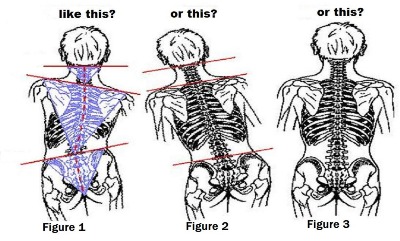Hilby has been on a mission of transformation. For the past year she has undergone an extensive weight training program with the intent of increasing muscle mass and leaning down her body fat.
This extensive training has left her, in her words, “twisted like a pretzel.” She complains of pain in her shoulders, back, and hips. She has been working hard to improve her physical health, has hit a “major wall” and is scared she is going to lose all her progress.
Verbal assessment is able to extract the following important information.
Pain in upper shoulders is the worst – constant intense ache with times of sharpness – more so on the left side. She used to get headaches occasionally but they have now become frequent and more intense. Pain goes down her neck, into her upper shoulders and mid/upper back. It’s greatly affecting her weight lifting.
Pain in back is difficult in the morning and at the end of the work day. It’s a dull ache that sits across the lumbar region just over the iliac crests. When attempting to do heavy squats her hips start to tighten and she sometimes gets pain going down the back and outside of her right leg. This too has made her weary about attempting heavier squats.
She’s doing some stretching but not much. Hydration is great. Heat on shoulder seems to be only thing that takes the edge off.
Visual assessment shows the following:
-Bilateral dropped arches with right side a little lower
-Common cause: Overactive calves, peroneus longus, tibialis posterior. Inhibitied/weak tibialis anterior and plantar foot intrinsic muscles.
– Externally rotated feet. Right side noticeably worse.
– Common cause: Overactive external hip rotators. Inhibited/weak hip medial rotators
– Right ASIS inferior and anterior
– Common cause: Overactive right rectus femoris, iliacus, left lumbar ESG, QL.
– Type 1 left curve through lumbar/thoracic spine
– Likely due to the rotation in the pelvis causing the sacrum to be tilted right. Tight left ESG.
– Elevated/upward rotated left shoulder
Common cause: Overactive left upper trap, levator scapula. Inhibited/weak lower trap, rhomboids
– Cranial right shear (usually a righting reflex compensation)
-Common cause: Overactive L sub occip, SCM.
Special tests for referred pain
Because she complains of pain going down the leg in a pattern that could indicate the sciatic nerve I perform a sciatic nerve stress test. It is negative which means likely this symptom may be trigger point referral from the gluteus minimus.
Because we don’t see sharp specific pains and the sciatic test came back negative we are likely dealing with layers of myofascial imbalance. Although correcting issues like this generally isn’t too difficult, it can take some time. Ensuring the client is aware of the self commitment this will take is imperative so they don’t lose hope and focus.
I begin care around balancing the pelvis. An unstable core is a foundation for dysfunction. Likely the shoulder neck issue is being heavily influenced by the unstable pelvis and resulting spinal curvature. Therefor it won’t respond well to care until it’s foundation has been corrected (Aston kinetics discusses in great detail the importance of the base of support).
Releasing the hip flexors, focusing more so on the shorter right side, utilizing compression and MET begins to correct the tilt and rotation. I also note increased hypertension in bilateral adductors with left side a bit tighter.
Compression into right glute medius/minimus reproduces referral down right leg. Ischemic compressions followed by eccentric stretching causes referral to cease.
Compression and pin and stretch techniques increase softness in hip external rotators. Increased ROM is noted as a result. We also recognize a capsular endfeel in internal rotation which must be addressed as well. This will be occur at a later session.
Gentle myofascial release to thoracolumbar fascia and sacral multifidi to soften superficial tissue layers.
Bilateral compression with active motion reduces restrictions through quadratus lumborum and lumbar ESG.
Due to the tension of the abdominal obliques and rectus doing direct psoas palpation isn’t advised. Today we focus on oblique release and attempt to drop into the iliacus.
Briefly at the end I provide some facilitated pec stretches to decrease posterior upper back and neck tension. This is best done at the end after the pelvic core balancing has occurred.
Post session reevaluation shows the pelvis to be resting closer to a neutral position. The work to the lumbars and obliques alongside the leveled sacrum shows decreased spinal curvature and a mild drop in the high shoulder.
Freedom of motion is noted from the client as well as decreased tightness in the upper back and shoulders.
Self care is as follows
Self MFR/Strech: Quads, Hipflexors, glute med/min, and obliques
Activate/Strengthen: Glute max, tib anterior, lower abdominals
Due to the amount of myofascial imbalance we need to be smart in how we approach the body. Releasing too many areas in one session can sometimes overload the system and cause it to spasm and reject the work. Minimal work was done on the upper body today so ensure the client understands why.
For this client I’d like to follow up in 4-7 days to reevaluate the hip/core imbalance and begin working on the upper thoracic and cervical regions.


0 Comments